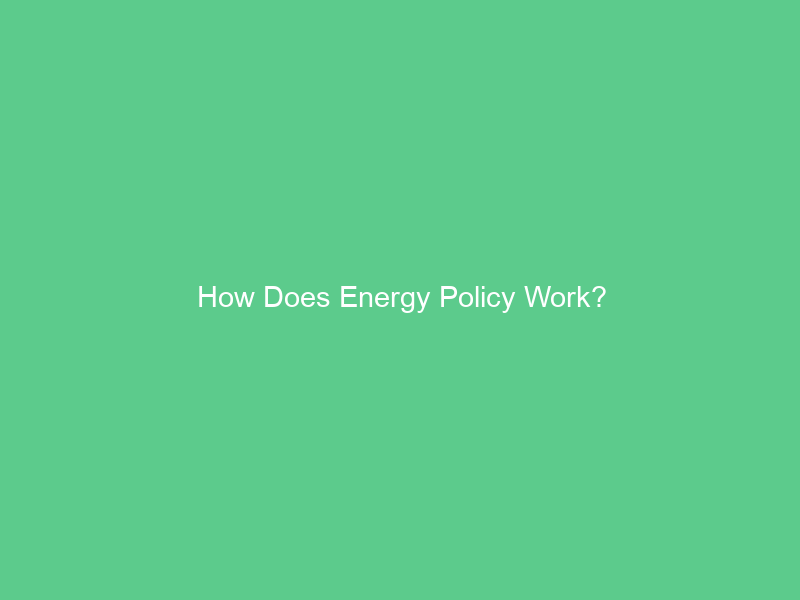An energy policy articulates top management’s commitment to increasing energy efficiency for their organization and outlines specific targets that help achieve its goals.
Nations around the world are moving away from fossil fuels to reduce greenhouse gas emissions, offering tax incentives, energy conservation guidelines and other methods. But this shift takes time.
Economic
Governments take different approaches to energy policy, reflecting a complex array of issues and interests. These could include balancing economic costs and benefits, decarbonization goals, system reliability issues, resource diversification needs, technology export potential potentials, electricity access needs or environmental considerations.
Policymakers use various mechanisms to influence energy-related choices, including taxes, subsidies, regulations and mandates as well as direct and indirect spending to affect these decisions. Many of these instruments offer financial incentives like tax breaks, rebates loans and grants.
Governments can intervene with energy markets to stimulate or suppress demand through price controls or fuel efficiency standards, with both positive and negative repercussions; such interventions can lower prices for consumers while decreasing energy usage and encouraging alternative technology investments, but they may increase market volatility or cause other unintended side-effects; this category of policy is typically studied using public administration or political science perspectives.
Environmental
Building or replacing energy infrastructure has a substantial effect on both the environment and society’s energy security, such as through renewables development, safe grid operations and research into alternative fuel technologies.
We must transition towards low-carbon alternatives to fossil fuels in order to curb global climate change, although policy objectives and impacts may diverge somewhat in this respect.
Targets and feed-in tariffs have proven some success in spurring RE innovation; however, their effectiveness can depend on context and technology. Furthermore, carbon pricing as an environmental demand-pull policy instrument has yielded mixed results (Godawska & Moschini 2021). Therefore it is imperative to thoroughly examine and assess each policy’s subtle effects.
Security
Energy supplies are indispensable to economic functions and any disruption can have severe repercussions. Countries aim to ensure reliable supplies by limiting access to fossil fuels and diversifying energy sources as well as strengthening resilience through infrastructure investments and risk mitigation strategies.
Behavior Energy Insecurity occurs when individuals take detrimental measures to cope with energy shortages or prices that have increased dramatically, potentially having devastating health, environmental and residential stability repercussions. Furthermore, increased consumption of fossil fuels has contributed to rising global temperatures which has in turn prompted energy policymakers to invest in energy related technologies as an attempt at mitigating climate change.
Improved integration between energy transition and security policies in case countries is necessary, with specific attention paid to identifying synergies and conflicts, such as long-term fossil fuel trajectory projections or material dependence related to renewables expansion; as well as creating new institutional structures related to technologies and business models – including international energy collaboration; as well as reframing what security means under decarbonized energy regimes.
Health
Energy is central to many United Nations Sustainable Development Goals (SDGs), including health and equity-related ones. While household energy insecurity has been extensively documented and associated with adverse health outcomes, little is known about its effectiveness under existing policy initiatives or programs attempting to tackle it. More rigorous causal analyses must be performed on such initiatives to fully comprehend their mechanisms.
Millions of households worldwide struggle to meet their energy needs, often at the expense of housing and healthcare needs. A variety of structural obstacles such as poverty, inequality, climate change, inflation and the clean energy transition all play a part in creating energy insecurity, particularly among low-income households and communities of color. There are various solutions available to reduce this insecurity including eliminating utility debt or disconnections as well as taking measures to decarbonize heating/cooling in homes/healthcare facilities.

